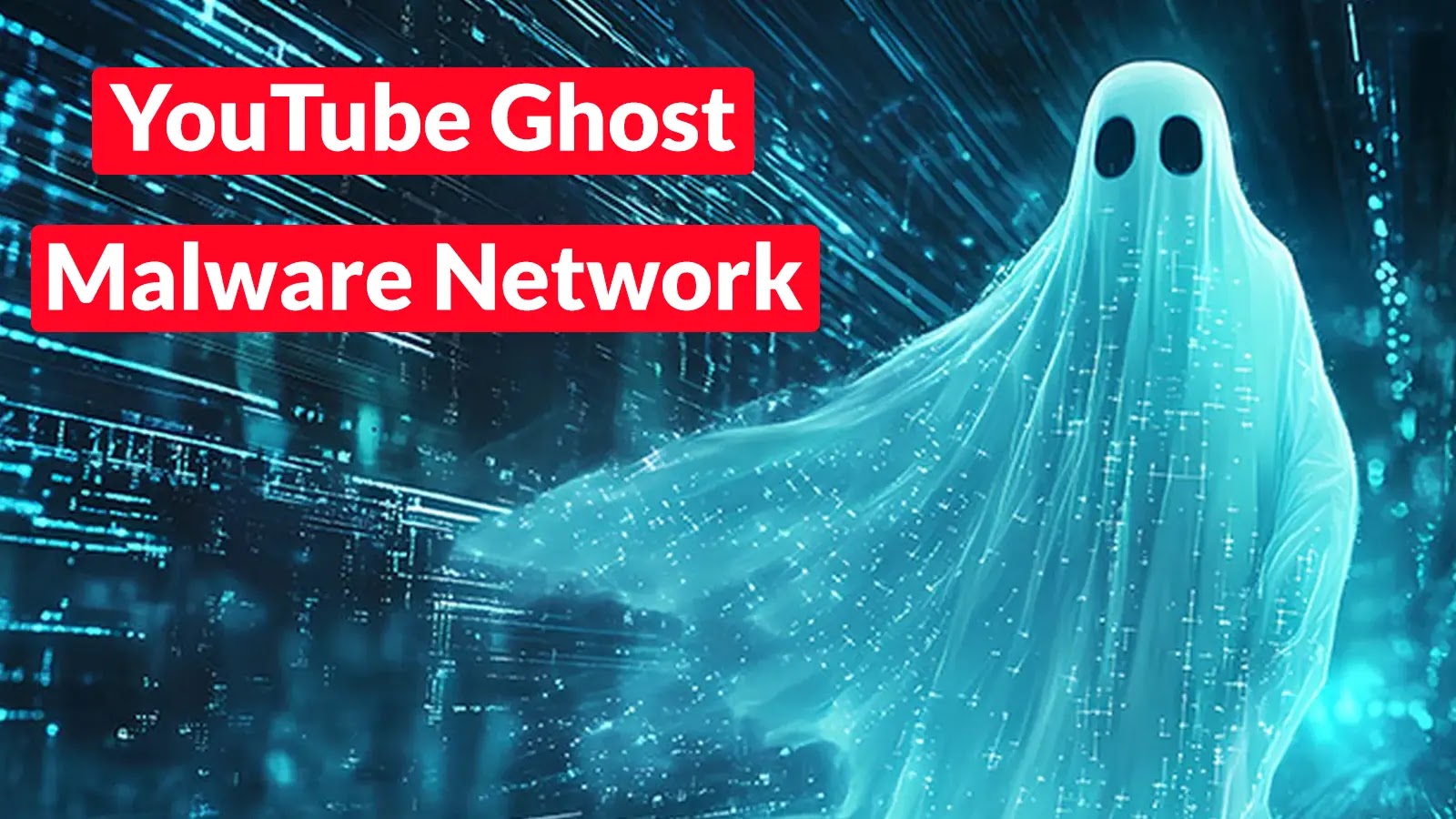
YouTube Ghost Malware Network With 3,000+ Malicious Videos Attacking Users to Deploy Malware
Unmasking the YouTube Ghost: A Deep Dive into a 3,000-Video Malware Network
In a stark reminder of the persistent threats lurking within popular online platforms, a sophisticated malware distribution campaign, dubbed the “YouTube Ghost Network,” has been brought to light. This elaborate operation leverages over 3,000 malicious YouTube videos to target unsuspecting users, primarily those actively seeking pirated software and game cheats. What makes this particular campaign so insidious is its cunning use of compromised accounts and fabricated engagement to build false trust, ultimately leading to the deployment of information-stealing malware.
The YouTube Ghost Network: A Coordinated Attack Ecosystem
Operating since 2021, the YouTube Ghost Network represents a highly coordinated ecosystem designed for maximum impact. The attackers exploit various YouTube platform features to distribute their malicious payload. This isn’t a random collection of isolated incidents; it’s a strategic, long-term campaign leveraging a significant number of compromised accounts. These accounts then host videos that, at first glance, appear legitimate or at least innocuous enough to attract curiosity, especially from users searching for specific, often illicit, content.
How the Malware Spreads: Exploiting Trust and Desire
The core of this network’s success lies in its ability to exploit human psychology. Users, driven by the desire for free software or game advantages, are less cautious when encountering videos promising such outcomes. The malicious videos often masquerade as tutorials or download guides for cracked software, pirated games, or cheat codes. Once a user clicks on a malicious link embedded within the video description or comments, they are led down a path designed to deploy information-stealing malware. The attackers further enhance their deception by:
- Fabricated Engagement: Utilizing bots and other fraudulent methods to generate likes, comments, and views on their malicious videos. This creates an illusion of legitimacy and popularity, making users more likely to trust the content.
- Compromised Accounts: The network relies on a vast array of compromised YouTube accounts, which adds a layer of authenticity and makes detection more challenging for YouTube’s automated systems. These accounts often have a history of legitimate activity, making them less suspicious.
- Social Engineering: The video content itself, along with descriptions and comments, employs social engineering tactics to convince users that clicking the provided links is safe and necessary to obtain the desired content.
The Payload: Information-Stealing Malware
The ultimate goal of the YouTube Ghost Network is the deployment of information-stealing malware. While the specific families of malware may vary, their primary function is to exfiltrate sensitive data from the infected system. This can include, but is not limited to:
- Login credentials for various online services.
- Financial information, such as credit card details.
- Personal identifiable information (PII).
- Cryptocurrency wallet data.
- Browser histories and cookies.
The impact of such a breach can be severe, leading to financial loss, identity theft, and compromise of numerous online accounts.
Remediation Actions and Best Practices
Protecting yourself from sophisticated threats like the YouTube Ghost Network requires a multi-layered approach and vigilance. Here are key remediation actions and best practices:
- Be Skeptical of “Free” Content: Exercise extreme caution when encountering offers for free pirated software, cracked games, or game cheats. These are almost always avenues for malware distribution.
- Verify Sources: Before downloading anything from a link found on YouTube, verify the legitimacy of the source. Look for official websites, reputable software vendors, or established gaming communities.
- Inspect Video Details: Pay attention to the age of the YouTube account, the quality of the video content, and the nature of the comments. An abundance of generic or overly positive comments can be a red flag.
- Hover Over Links: Before clicking any link in a video description or comment, hover your mouse over it to see the actual URL. Be wary of shortened URLs or those that don’t match the expected domain.
- Use Reputable Antivirus/Anti-Malware Software: Ensure your operating system and all software are kept up-to-date. Install and maintain a robust antivirus or endpoint detection and response (EDR) solution that can detect and block known malware.
- Enable Multi-Factor Authentication (MFA): Implement MFA wherever possible for all your online accounts. This adds a critical layer of security, even if your credentials are stolen.
- Regular Backups: Regularly back up your important data to an external drive or cloud service. This can mitigate the impact of a data breach or ransomware attack.
- Educate Yourself: Stay informed about the latest cybersecurity threats and social engineering techniques. Awareness is your first line of defense.
Key Takeaways
The YouTube Ghost Network serves as a potent reminder that cyber threats are constantly evolving and adapting to exploit popular platforms. The campaign’s success hinges on exploiting the trust users place in YouTube and their desire for easily accessible, often illicit, content. By fabricating engagement and leveraging compromised accounts, attackers create a convincing facade to distribute information-stealing malware. Users must adopt a proactive and skeptical mindset, verifying sources and exercising extreme caution with any offer that seems too good to be true. Staying informed and implementing strong cybersecurity hygiene are paramount to defending against such sophisticated, long-running threats.





